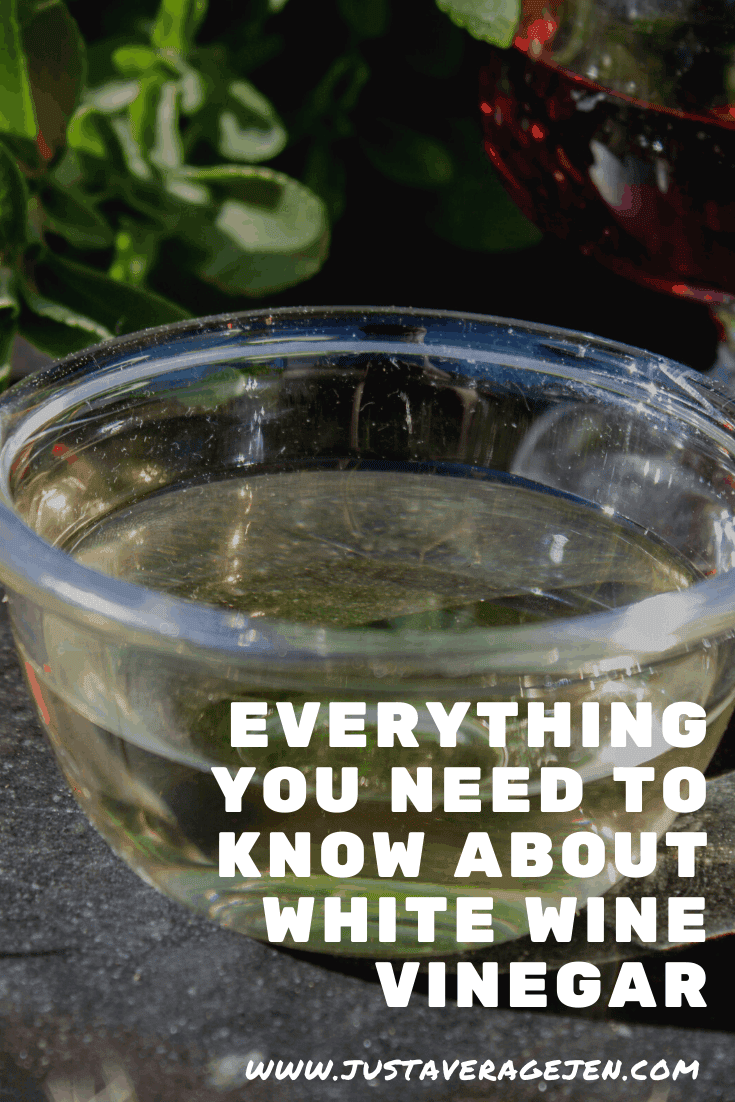Everything you need to know about white wine vinegar
White wine vinegar is, without a doubt, a pantry staple. If you don’t have any, it’s definitely worth investing in a bottle. It’s not a flashy, fancy ingredient that will be hugely forward in the food you make, but it will lend a powerful base to anything that you create. Not only that but vinegar can be used for many other things too.

What is white wine vinegar?
This is made in much the same way as apple cider vinegar, though with grapes instead of apples. Firstly, white wine is made from grapes and water, principally. Then, the vinegar is made by fermenting and oxidizing the wine into an acid that has a light and fruity flavour.
This distillation process (to turn the liquid from wine to vinegar) takes place in stainless steel vats called acetators. These vats expose the ethanol in the wine to oxygen, and, thusly, the acid is made.
This acid is then diluted with water until it reaches an acceptable level of acidity. Typically, this level is somewhere between five and seven per cent, though it changes depending on the manufacturer of the vinegar.
Another thing that can change between different varieties of white wine vinegar is the grapes used. Although the grapes in, say, balsamic vinegar, is typically known, white wine vinegar is often made from a number of wines, called ‘wine stock’.
How to use white wine vinegar
It has a huge number of uses in the kitchen, and I’m always reaching for mine whenever I cook.
It’s a great choice to make up part of the brine for pickling various different sorts of fruit and veg. It has a subtle sweetness and a sharp acidity that balances well, when blended with distilled white vinegar, to form a great pickling liquid. Red onion or watermelon rind could be particularly good for pickling with that vinegar blend, though you might need to experiment a little to find a good vinegar to vinegar ratio.
White wine vinegar makes an amazing ingredient in salad dressing! It’s ideal for use in vinaigrettes: a simple mixture of vinegar and olive oil. Simply whisk a tablespoon of white wine vinegar with two to three tablespoons of extra virgin olive oil – depending on how acidic you’d like your salad dressing to be. Season with a little salt and pepper, and you’re good to go!
If you’re feeling particularly fancy, you can add a tablespoon of dijon mustard, or even a finely chopped small shallot to your vinegar. Once added, leave the vinegar for five to ten minutes, and then mix with the other dressing ingredients, and serve! This combination of flavours and textures will bring a bright lift to your salads, or whatever you choose to put the dressing on.
White wine vinegar is an endlessly valuable companion in the kitchen, and once you add it to a couple of your recipes, you’re sure to always have it to hand. Next time you’re cooking, try throwing a dash or two into a stew, and see just how much it can brighten up the flavour!
Other vinegar related articles
Rice vinegar – everything you need to know
What is malt vinegar and how you can use it
Balsamic vinegar, tips and tricks to use it
Using apple cider vinegar in a cranberry drink
